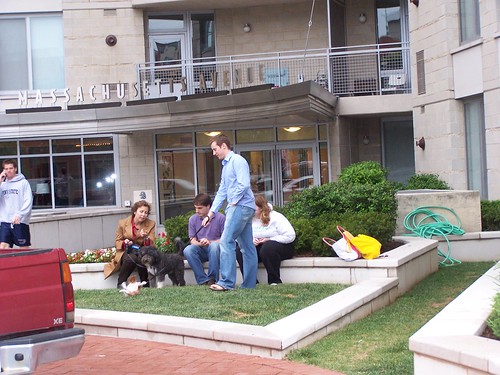Has DC reached revitalization critical mass, so that local government missteps don't matter?
And granted, the local schools situation isn't very promising in terms of long term attraction and retention of families with school-aged children, although charter schools and certain high quality and magnet programs in certain DCPS schools provide some hope. (Basically, what people call the "reform" process that started with Michelle Rhee could be more accurately described as school destruction--robust systems needed to be created in order to address and mitigate "achievement gaps" but instead personnel has been roiled by too frequent changes of principals and a focus on firing teachers.)
But according to last Thursday's Post, the "Number of District residents skyrockets."
The District has gained more than 16,000 residents since last spring, growing at a pace that outstripped anything seen in the boom years preceding it.
Census figures released Wednesday estimated the city’s population was 618,000 in July, up 2.7 percent from the census figure in April last year. The current growth spurt is so rapid that the District is on track to draw more newcomers in two years than it did in the entire decade before.
The District’s expansion is all the more remarkable when compared to the rest of the country, which is experiencing its slowest growth since the end of World War II.
The District’s population figures cap a decade of success in maneuvering a turnaround in the city’s fortunes, and its image. Barely 15 years ago, the District had a widespread reputation for having streets that wouldn’t get plowed after a winter storm and that were crime-ridden in any season. Now, the District routinely shows up on lists of cool cities where young people gravitate, and it is drawing as many young adults as ultra-hip Austin and Portland. Three in four newcomers in recent years have been between the ages of 18 and 34. They have zero interest in the suburbs.
Why, in the face of an almost meltdown in local government ("Can D.C. council go back to legislating?" Post) not to mention over-reach ("Is D.C. overgoverned? Or undergoverned?" Post) is the city's population continuing to grow?
Sure DC has a lot going for it:
One reason is that comparatively speaking, housing in DC will hold its value more when compared to other cities in the country. Because even when the governance function of the federal government is doing "badly" ("Politicians in denial," Post) people still work for it, bills are paid, etc., so that creates a high positive equilibrium for the housing market ("DC housing market one of two in nation's top 20 to post price increase," Examiner). Although, with federal government gridlock and a focus on budget reduction and contraction, this growth and steady state position is going to diminish somewhat, but still, compared to most other locations across the country, DC in particular (and the region as well, depending on local conditions) will remain attractive.
And during the recession/Depression since 2008, for the most part, housing in DC has held its value, especially compared to most other markets nationally.
But you don't have the kind of price drop in DC where houses are selling for under $200,000. Even in Mount Rainier, Maryland, just across the border with DC, houses there are selling for half or even less of what they would sell for in DC (depending on the neighborhood), because of the big inventory of foreclosed houses in Prince George's County.
But the big issue, at least, is that the wave of new in-migrants to the city are young, and how the city runs--except for public safety and access to cool restaurants and taverns--doesn't matter all that much to them, now.
1940 -- 663,000
1941 -- 758,000
1942 -- 817,000
1943 -- 891,000
1944 -- 881,000
1945 -- 876,000
1946 -- 899,000
1947 -- 888,000
1948 -- 840,000
1949 -- 807,000
1950 -- 802,000.
The trick will be to maintain and/or grow population as household types change--singles to marrieds, marrieds to marrieds with children, etc.
Vincent C. Gray, mayor: Look alive. A year into his mayoralty, Gray (D) has pretty well figured out it’s tough to be top dog. Try as he does to tout new economic development projects, reduced unemployment, improved city services and a growing population, he has yet been unable to animate his administration with anything more inspiring than his threadbare “One City” mantra. Filling the vacuum instead have been blown vettings, dismal approval ratings and a strange, scorned employee in sunglasses. A new cadre of top staffers have been brought on to help, but will their boss ever get the “vision thing”?
Labels: housing market, population/Census, urban design/placemaking, urban revitalization, urban vs. suburban





0 Comments:
Post a Comment
<< Home